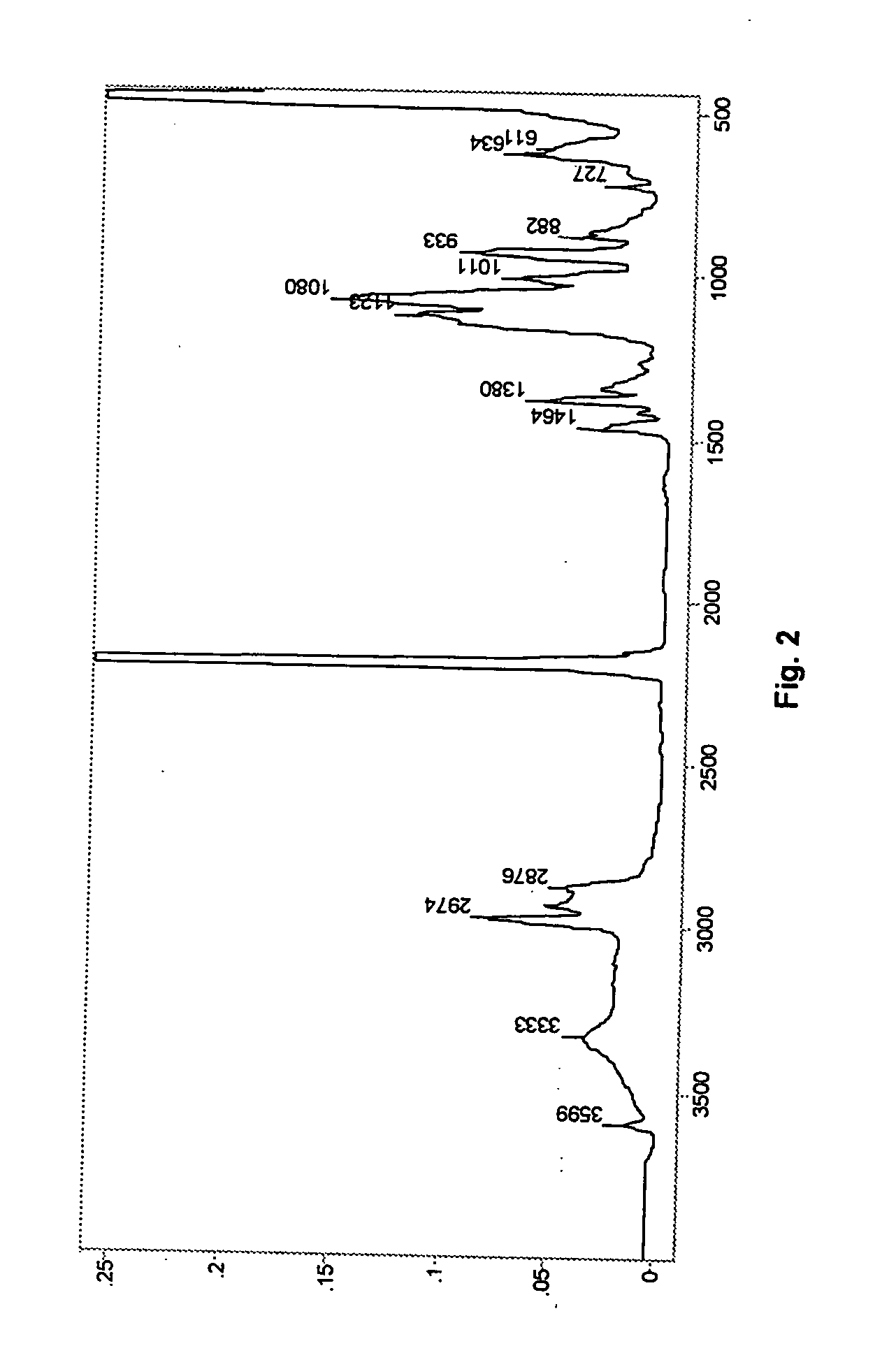Process for the production of polyols using DMC catalysts having unsaturated tertiary alcohols as ligands
a technology of unsaturated tertiary alcohol and catalyst, which is applied in the field of catalysis, can solve the problems of large quantities of less active catalysts, high unsaturation of polyols made with other tertiary alcohols, and no mention of the suitability of ligands
- Summary
- Abstract
- Description
- Claims
- Application Information
AI Technical Summary
Benefits of technology
Problems solved by technology
Method used
Image
Examples
examples
[0036] The present invention is further illustrated, but is not to be limited, by the following examples.
example 2
Preparation of DMC Compound with 2-methyl-3-butene-2-ol (MBE)
[0038] A 1 L baffled round bottom flask was equipped with a mechanical paddle stirrer, heating mantle, and a thermometer. Distilled water (275 g) was added to the flask followed by of technical grade zinc chloride (27 g). Sufficient zinc oxide was added to bring the alkalinity of the system to 1.63% ZnO. The mixture was stirred at 400 rpm and heated to 50° C. until all of the solid dissolved. Then, 2-methyl-3-butene-2-ol (“MBE”, 46.5 g) was added to the solution and the temperature was maintained at 50° C.
[0039] A second solution was prepared with potassium hexacyanocobaltate (7.4 g) in 100 grams of distilled water. The potassium hexacyanocobaltate solution was added to the zinc chloride solution over a one-hour period. After addition was complete, stirring was continued for an additional 60 minutes at 50° C. A third solution of 1 k diol (7.9 g), MBE (27.1 g), and water (14.9 g) was prepared and added to the flask at th...
example 3
[0040] Preparation of DMC Compound with 2-Methyl-3-butyn-2-ol (MBY)
[0041] A 1 L baffled round bottom flask was equipped with a mechanical paddle stirrer, heating mantle, and a thermometer. Distilled water (275 g) was added to the flask followed by technical grade zinc chloride (27 g). Sufficient zinc oxide was added to bring the alkalinity of the system to 1.63% ZnO. The mixture was stirred at 400 rpm and heated to 50° C. until all of the solid dissolved. Then, 2-methyl-3-butyn-2-ol (“MBY”, 45.4 g) was added to the solution and the temperature was maintained at 50° C.
[0042] A second solution was prepared with potassium hexacyanocobaltate (7.4 g) in distilled water (100 g). The potassium hexacyanocobaltate solution was added to the zinc chloride solution over a one hour period. After addition was completed, stirring was continued for an additional 60 minutes at 50° C. A third solution of 1 k diol (7.9 g), MBY (30.8 g), and water (14.9 g) was prepared and added to the flask at the e...
PUM
| Property | Measurement | Unit |
|---|---|---|
| wt. % | aaaaa | aaaaa |
| wt. % | aaaaa | aaaaa |
| temperatures | aaaaa | aaaaa |
Abstract
Description
Claims
Application Information
 Login to View More
Login to View More - R&D
- Intellectual Property
- Life Sciences
- Materials
- Tech Scout
- Unparalleled Data Quality
- Higher Quality Content
- 60% Fewer Hallucinations
Browse by: Latest US Patents, China's latest patents, Technical Efficacy Thesaurus, Application Domain, Technology Topic, Popular Technical Reports.
© 2025 PatSnap. All rights reserved.Legal|Privacy policy|Modern Slavery Act Transparency Statement|Sitemap|About US| Contact US: help@patsnap.com



